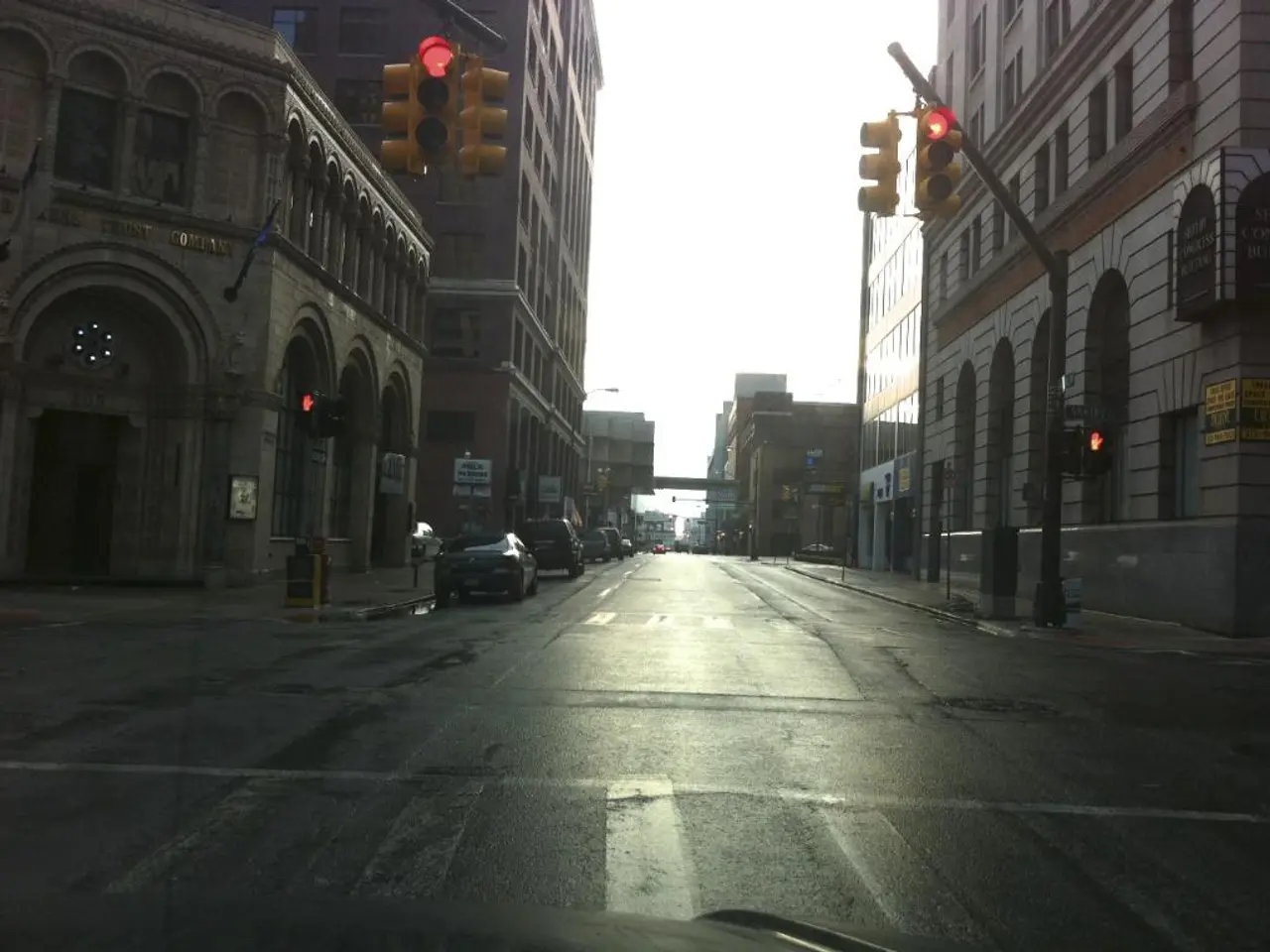Crossing the road while preoccupied with a mobile device raises the likelihood of a traffic accident
In a bid to create safer urban environments for pedestrians, Spanish cities are implementing various measures to combat distractions and reduce traffic risks. The data reinforces the need for intensified surveillance and education around the use of basic safety devices.
Madrid, for instance, has established the Madrid 360 Low Emissions Zone, a city-wide strategy that restricts access to certain vehicles to lessen traffic and pollution, thereby creating a healthier and safer urban environment. Enforcement is carried out using cameras to monitor compliance and issue fines to unauthorized vehicles [1].
Addressing pedestrian distraction is another key focus. Spain's Directorate General of Traffic (DGT) is conducting a nationwide study and awareness campaigns on "phone-walking" at crossings. This initiative aims to reduce pedestrian distraction by promoting street designs better adapted to pedestrian behaviour, improved markings, and safety messages encouraging pedestrians to stay attentive when crossing streets [2].
Málaga, another city, has banned scooters and bicycles from pedestrian zones to avoid conflicts and improve pedestrian safety, alongside efforts to manage tourist behaviour for a calmer urban environment [4].
While other countries are actively implementing school streets with traffic calming and green infrastructure to protect children specifically, Spanish cities are focusing on comprehensive low-emission zones and pedestrian awareness initiatives as their main tools to enhance pedestrian safety [1][2].
Vigo is one city that has started implementing measures to protect pedestrians, including lights on the sidewalk to help pedestrians know when to cross and when to stop. However, the data shows that while these measures are important, there is still room for improvement.
In 2024, a total of 488 people died in traffic accidents in urban areas, representing a 6% decrease from the previous year. Yet, 28% of these deaths occurred among individuals not using mandatory safety accessories, a slight increase from the 26% recorded in 2023 [3].
Among cyclists and motorcyclists who died in 2024, a significant number were not wearing helmets. For cyclists, 14 out of 18 (78%) were not wearing helmets, while for motorcyclists, 15 out of 123 (12%) were not wearing helmets at the time of the accident [3].
The situation is particularly serious among car occupants, where 25 out of 60 people who died (42%) in 2024 were not wearing seat belts [3].
Pedestrians themselves are not immune to the risks. A citizen in a city with sidewalk lights stated that the lights help them cross the street safely, as they are often distracted by their mobile devices. Psychologist Nuria Pérez from the Association for educating in road safety and avoiding injuries from mobility in Spain (AESLEME) warned that people tend to relax at pedestrian crossings because they feel safe, but this is often when they are least attentive to oncoming traffic [5].
To further enhance pedestrian safety, raising pedestrian crossings could be another option. This, along with continued education and enforcement efforts, could help to create a safer urban environment for all.
References:
[1] Madrid 360: https://www.madrid.es/360 [2] DGT: https://www.dgt.gob.es/ [3] Data on urban road safety: https://www.dgt.gob.es/estadisticas/accidentes/informes/informe_accidentes_urbanos.htm [4] Málaga pedestrian zone restrictions: https://www.malagatouristguide.com/malaga-city-guide/malaga-pedestrian-zones.html [5] AESLEME: https://www.aesleme.es/
In light of the concerning statistics showcasing the lack of use of mandatory safety accessories by some road users, it is crucial to augment awareness campaigns about the importance of using these devices, especially for pedestrians, cyclists, and motorcyclists. For instance, promoting the use of helmets and seat belts could significantly reduce the number of accidents and fatalities on Spanish roads.
Moreover, considering the distractions that digital devices pose to pedestrians, emphasizing street designs that are more adapted to pedestrian behavior, improved markings, and safety messages encouraging attentiveness could be key elements in reducing distractions and fostering a healthier and safer urban environment.




